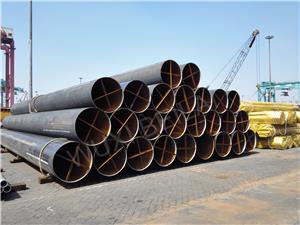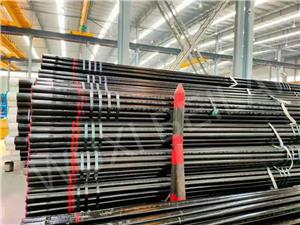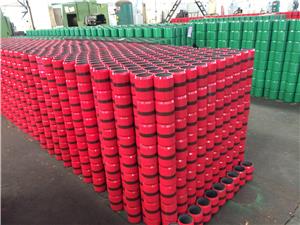Engineered Cold: BEILAI Low Temperature Pipe for LNG Service
BEILAI designs and manufactures high-reliability low temperature pipe solutions purpose-built for the demanding cryogenic conditions of the LNG value chain. From liquefaction trains and storage tanks to loading arms and regasification terminals, our low temperature pipe for LNG service is engineered to safeguard flow assurance, maintain ductility at sub-zero temperatures, and deliver long service life with minimal maintenance.
What “Low Temperature Pipe for LNG Service” Really Means
Liquefied natural gas is stored and transported at approximately −162 °C (−260 °F). At these temperatures, standard carbon steel can become brittle. A true low temperature pipe retains impact toughness and dimensional stability, resisting brittle fracture and stress-induced cracking. A genuine low temperature pipe for LNG service therefore combines material chemistry, heat treatment, NDE protocols, and surface integrity to survive repeated thermal cycles from cooldown to warm-up.
Material Portfolio Optimized for Cryogenic Toughness
BEILAI offers a carefully curated material set to match each LNG duty:
ASTM A333 Grade 6 – the workhorse low temperature pipe for utility lines, vapor return, and cold service headers.
ASTM A333 Grade 3 / Grade 1 – alternative chemistries for specific toughness/strength balances.
ASTM A312 304/304L and 316/316L – austenitic stainless steels with excellent cryogenic toughness and corrosion resistance for low temperature pipe for LNG service exposed to chlorides or marine atmospheres.
9% Nickel steel (9Ni) – selected components in LNG storage and transfer where very low design temperatures are specified.
Duplex / Super Duplex – targeted where higher chloride stress corrosion resistance is required alongside low-temperature capability.
Core Advantages of BEILAI Low Temperature Pipe
Cryogenic Toughness: Charpy V-notch performance at specified sub-zero temperatures for every heat and lot of low temperature pipe.
Dimensional Precision: Tight OD/WT tolerances ensure consistent heat input and alignment during welding of low temperature pipe for LNG service.
Corrosion Resistance: Stainless and nickel-containing alloys withstand marine exposure, salt spray, and condensate chemistry.
Proven Weldability: Controlled chemistry and heat treatment minimize HAZ cracking risk and preserve impact toughness in welded joints.
Lifecycle Value: Lower leak risk, fewer unplanned shutdowns, and longer inspection intervals reduce total cost of ownership.
Where You’ll Find Our Low Temperature Pipe in LNG
Our low temperature pipe for LNG service appears across the entire chain:
Liquefaction Facilities: feed gas chilling, MR/PR lines, cold box headers, nitrogen cooldown loops.
Storage & Boil-off Management: BOG compressors, recondenser circuits, vapor return and relief systems using low temperature pipe.
Marine Loading/Unloading: jetty lines, loading arms, emergency release systems requiring low temperature pipe for LNG service with high fatigue resistance.
Regasification Terminals: submerged combustion vaporizers, ORV/SCV skids, HP send-out lines.
Small-Scale LNG: satellite storage, bunkering skids, virtual pipeline modules using lightweight low temperature pipe designs.
Specifications and Dimensional Range
| Parameter | Typical Range / Option |
|---|---|
| Outer Diameter (OD) | 10.3 mm – 660 mm (wider ranges available upon request) |
| Wall Thickness (WT) | 1.0 mm – 60 mm depending on schedule/pressure class |
| Length | Up to 12 m (random/DRL/SRL), cut-to-length |
| Standards | ASTM A333/A334, ASTM A312, ASME B31.3/B31.4/B31.8, EN 10216, ISO/DP project specs |
| Delivery Condition | Normalized (N), Quenched & Tempered (Q&T), Solution Annealed for stainless |
| End Finish | BE, PE, beveled to ASME B16.25; machining per spool drawings |
| Surface | Pickled & passivated (stainless), shop primer or rust-preventive oil (carbon/low alloy) |
Testing and Quality Assurance for LNG Duties
Every low temperature pipe and spool destined for low temperature pipe for LNG service is validated under a rigorous QA program:
Chemical Analysis & Mechanical Testing: heat-by-heat validation to ensure composition and strength targets.
Impact Testing: Charpy V-notch at specified sub-zero temperatures with documented absorbed energy.
NDE: ultrasonic, eddy current, and radiography as required for seamless integrity of low temperature pipe.
Pressure Testing: hydrostatic or pneumatic per code and client specification.
Documentation & Traceability: MTCs, weld maps, NDE records, PMI logs for all low temperature pipe for LNG service shipments.
Engineering Support: From Specification to Installation
Our application engineers collaborate early to select the right grade, schedule, and corrosion allowance. We provide weld procedure guidance (PQR/WPS), recommended preheat/interpass for carbon-manganese grades, and filler metal pairing for stainless lines. For modular skids, BEILAI can deliver prefabricated spools that integrate low temperature pipe, supports, and instrumentation ports, reducing site time and exposure during cold commissioning.
Coatings, Insulation, and Accessories
While stainless low temperature pipe may remain uncoated, we also supply epoxy or polyurethane coatings for above-ground carbon steel lines. Insulation systems (PIR/PUR cellular glass with vapor-stops) are specified to control icing and minimize heat leak. We supply compatible fittings and flanges, ensuring that the entire low temperature pipe for LNG service system maintains cryogenic performance at joints and supports.
ESG and Lifecycle Economics
Choosing robust low temperature pipe reduces fugitive emissions, improves energy efficiency, and extends overhaul intervals. Less rework and fewer leaks mean smaller environmental footprints at LNG terminals. By combining durability with supply reliability, our low temperature pipe for LNG service helps operators meet ESG targets without sacrificing throughput.
Global Supply, On-Time Delivery
BEILAI maintains strategic inventories and flexible production slots to shorten lead times. Whether your project is a major terminal expansion or a fast-track small-scale LNG skid, we deliver low temperature pipe and fabricated assemblies on schedule, backed by multilingual field support and digital documentation packs.
Typical Project Workflow
Front-End Review: process conditions, corrosion data, and code requirements for low temperature pipe for LNG service.
Material & Schedule Selection: grade, schedule, and corrosion allowance definition.
Qualification: weld procedures, impact testing plans, inspection & test plans (ITP) for low temperature pipe.
Production & NDE: continuous monitoring with witness holds.
Delivery & Commissioning: packaging, preservation, and cooldown support.
Conclusion
Operating at cryogenic temperatures demands materials you can trust. BEILAI’s low temperature pipe portfolio and integrated fabrication services deliver proven reliability across liquefaction, storage, transfer, and regas. When you need low temperature pipe for LNG service that balances toughness, weldability, and lifecycle value, partner with BEILAI.




